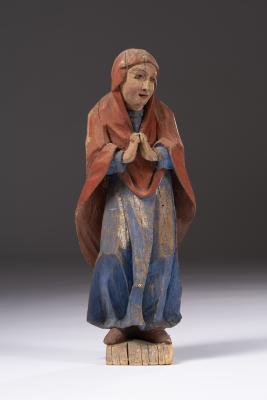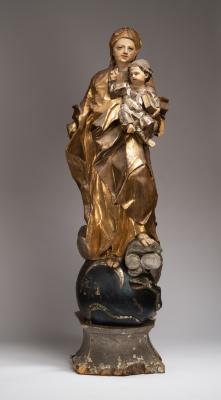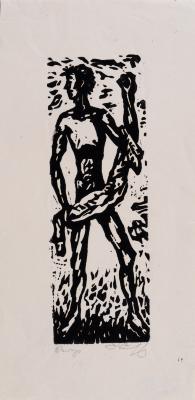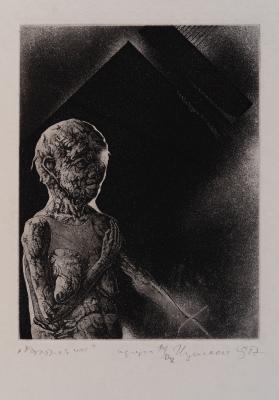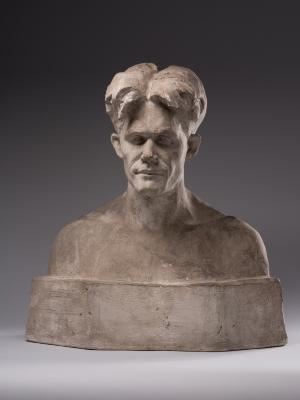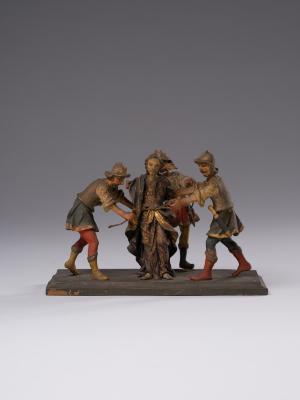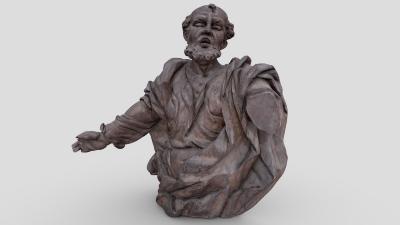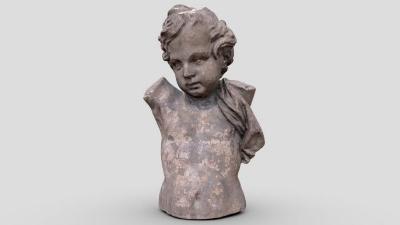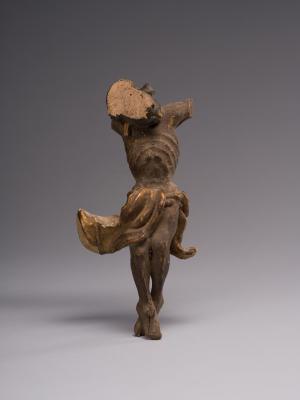It is likely that these are sketches for the portrait of Metropolitan Andrey Sheptytsky, whose moral and material support allowed Boichuk to get acquainted with the cultural heritage and achievements of prominent European cultural centers such as Vienna, Krakow, Venice, Florence, Munich, and Paris, as well as to receive professional education. In the 1910s, there were a number of sketches of the portrait of Andrey Sheptytsky created by Mykhailo Boichuk. They solve various tasks related to the expressive possibilities of lines, strokes, and the chiaroscuro; however, they have something in common, namely the artist's desire, as in the iconography, to show not the rough materiality but the spiritual basis of the image. On the reverse side of the sheet, there are conditional sketches of a male figure holding a stick, as well as a female head.










